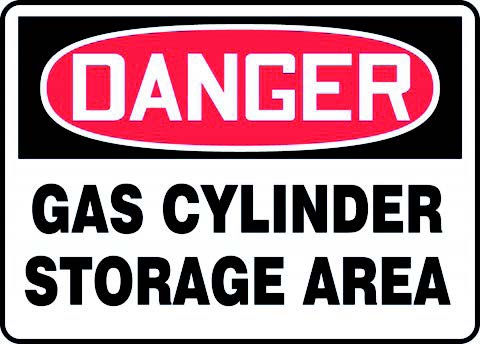By Travis Halsted, Loss Control Consultant
Whether it be a foundry, fabrication facility, snack food warehouse, welding facility or one of the many other industries that MTMIC works with, compressed gas cylinders can be found in the majority of them. Compressed gas cylinders serve a plethora of purposes, but also provide just as many hazards. From oxygen displacement and toxic effects of some gases, to physical hazards such as a ruptured cylinder and explosions, any failure of a cylinder can be catastrophic. It is paramount to understand the pressure that these cylinders are under. If a cylinder has a sudden release of any of the gases, it can become a dangerous missile-like projectile. There have been documented cases of compressed gas cylinders, under the sudden release condition, to have breached a cinder block wall. In other events, vehicles have been destroyed by explosions when the cylinder wasn’t properly secured during transport or if the valve was inadvertently opened. An essential part of working with gas cylinders is to ensure that you have a clear understanding of what gas or gases you are working with. Gases include, but are not limited to; flammable gases, oxygen and oxidizing gases, acid and alkaline gases, toxic gases, cryogenic gases and inert gases. Each of these gases have their own benefits and hazards.
Due to these hazards, there are clear and concise rules and guidelines for working with these cylinders. When determining proper storage of compressed gas cylinders, one must consider the following:
 Cylinders should be properly secured in an upright position at all times whether attached to a wall, cylinder truck, rack or post.
Cylinders should be properly secured in an upright position at all times whether attached to a wall, cylinder truck, rack or post.- Caps should be on and tightly secured when in storage.
- Cylinders should be stored in a well ventilated area away from any type of an ignition source.
- Under Rule 1222 (2) of MIOSHA standards Part 12, a cylinder shall be stored away from heat in excess of 125 degrees Fahrenheit.
- Oxygen cylinders (empty or full) should be separated from fuel gas cylinders or combustible materials by a minimum distance of 20 feet or more or by a barrier at least 5 feet high with a fire resistance of at least one-half hour.
- Full and empty cylinders should be stored separately and labeled to prevent confusion.
- Under Rule 1222 (4) of MIOSHA standards Part 12, storage of cylinders shall be set up to ensure first-in, first-out usage.
- Compressed gas cylinders must be identified properly. This would include:
- Use a durable label that cannot be removed. No gas cylinder should be used that does not clearly identify its contents by name.
- Because suppliers vary with color coding, color coding is not a reliable means of identification.
- Labels on caps has no value for identification because cylinder caps are interchangeable.
To ensure that the safest practices are maintained during the use and servicing of compressed gas cylinders, the following items should be followed:
- Know and understand the properties, uses and safety precautions of the gas being used.
- Always use the proper regulator for the gas in the cylinder. Check the regulator prior to attaching it to the cylinder. Ensure the threads on the cylinder and the connection are of a type intended for the gas service.
- Do not permit oil or grease to come in contact with cylinders or their valves. Wipe the connections with a lint free cloth.
- Attach the regulator securely with a cylinder wrench or other tightly fitting wrenches.
- Open the valve slowly and do not use a wrench to open the valve.
- Do not attempt to repair any cylinder valve or regulator. Put a tag on the defective part stating the defect and immediately remove it from service.
- Use a cylinder cart to manually move a gas cylinder. Refrain from sliding, dragging or rolling a gas cylinder.
While these are some of the most discussed practices, there are a plethora of other items that can be covered when discussing compressed gas cylinders. I strongly encourage you to contact your Loss Control Consultant with any questions and/or concerns.






